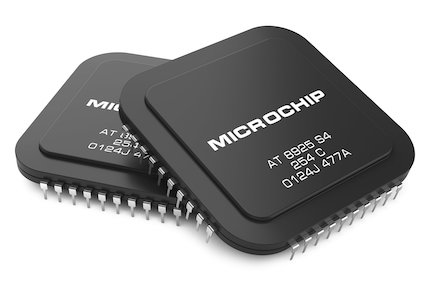There has been a lot of happy talk coming from Wall Street lately about how semiconductor shortages will be over soon.
Don’t believe a word of it.
Semiconductor Shortage Persists
According to the U.S. electronic component distributor Sourcengine, lead times for chip orders in early February grew from five to 15 weeks longer from where they were in October.

Based on the company’s data, lead times for general-purpose chip products averaged 44 weeks for 16-bit processors—up 15 weeks from October—and 37 weeks for power chips, which is up nine weeks. The longest lead time reached 99 weeks for certain specialty processors.
The reason is straightforward enough: in addition to demand growing faster than supply, chipmakers have prioritized addressing the shortage of cutting-edge semiconductors over commodity products (generic chips that are interchangeable between suppliers).
Needless to say, this backlog has all sorts of manufacturers scrambling to secure chip supplies—no matter the cost. And that feeds directly into inflation.
Prices for processors and other chips average 15% higher year over year, according to U.S. tech market research firm Gartner. Chipmakers are responding by boosting supplies, with wafer shipments increasing 14% in 2021. Factories in places like Taiwan, South Korea, and China (the biggest consumer of chips globally) are running all out.
But with the cutting-edge chip supply prioritized, capacity increases for commodity products—such as those used in automobiles—have taken a back seat. Production capacity for chips using 40-nanometer and older technology grew a meager 4% in 2021, according to the consultancy McKinsey & Co. Meanwhile, capacity for 28-nanometer and more advanced chips rose 13%.
Semiconductor Industry Expansion
More expansion of semiconductor production capacity is underway.
The industry organization SEMI estimated in June that construction on close to 30 new fabs will start by the end of 2022. In September, SEMI predicted that global semiconductor equipment investment for front-end fabs, where the silicon wafers are processed, will be nearly $100 billion next year. This is after topping $90 billion this year; both figures are records.
Some of the money will be spent on producing more ‘old tech’ chips, where the present global chip shortage has been most acute. Major contract chipmakers will increase capacity for these chips by about 40% between 2021 and 2025.
Capacity for the latest generation of semiconductors will be expanded a lot—roughly double. Keep in mind that cutting-edge production capacity is coming from a low base, currently accounting for only about 11% of global semiconductor output from contract chipmakers.
GlobalFoundries CEO Tom Caulfield put this all into perspective nicely in June: “It took 50 years for the industry to grow to half a trillion dollars today (the industry’s annual revenues), and now it is estimated that the industry will grow to a trillion in roughly eight years.”
Leading the way, and remaining my favorite semiconductor company, is the world’s largest contract manufacturer: Taiwan Semiconductor (TSM).
Taiwan Semiconductor Plans Record Expansion
Taiwan Semiconductor Manufacturing (TSM) said in January that it will spend a record amount in 2022—as much as $44 billion—to expand capacity as the company tries to help alleviate the global chip shortage and meet surging demand for advanced chips used in AI and 5G-driven applications for cars, data centers, and smartphones.
The company, which supplies chips to almost all the world’s leading chip developers, has earmarked between $40 billion and $44 billion for capital expenditure this year—a major step up from its already record-breaking $30 billion in spending in 2021. This puts TSM on track to meet its target of investing $100 billion over the three years ending in 2023.
TSM’s CEO, C.C. Wei, has said the overall foundry industry will grow 20% on the year in revenues.
But that’s not good enough for Taiwan Semiconductor. Wei added that TSM will outperform that rate with growth in the mid- to high-20% range. He also raised the forecast for the company’s compound annual growth rate (CAGR) for “the next several years,” to between 15% and 20% in U.S. dollar terms, higher than the previous forecast of about 10%.
And despite these massive spending plans, Wei assured TSM investors that a 53% gross margin rate for several years to come is achievable, and that the company can earn a sustainable return on investments of more than 25%.
He’s likely to be proven right. The company told clients last August that it will hike prices by up to 20% for its various manufacturing services. TSM’s biggest price adjustment in a decade started to have an impact in the last quarter of 2021, and will no doubt boost the company’s profit margin in 2022.
Taiwan Semiconductor’s revenue for all 2022 will likely rise by about 25%, as forecast, as the price increases helps lift its average selling price, and as the company gains more orders from Nvidia and Qualcomm this year, at Samsung’s expense.
TSM stock is a buy on any selloff in tech stocks, at any price in the $120 to $130 a share price range.





